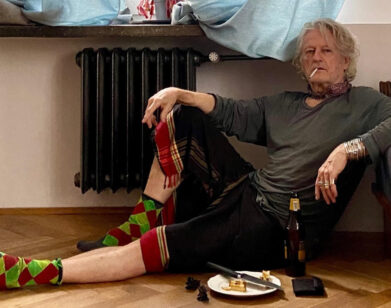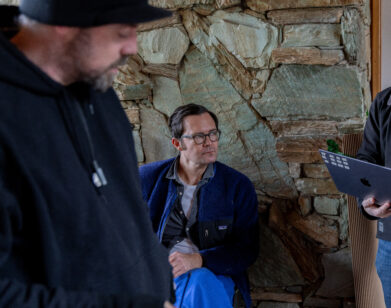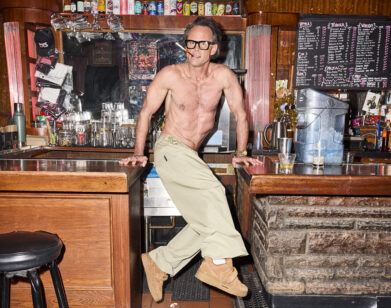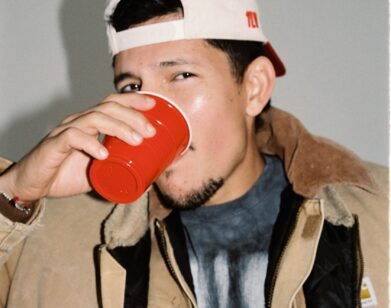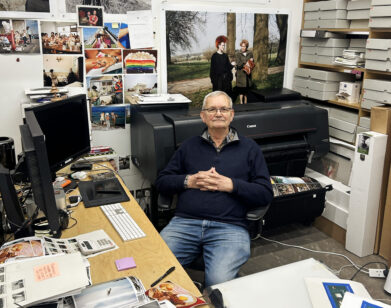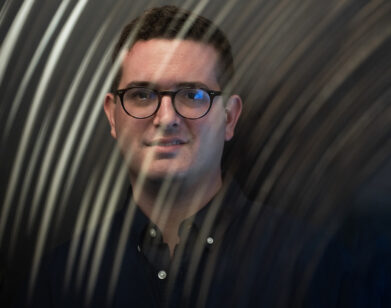The Architecture of Apichatpong
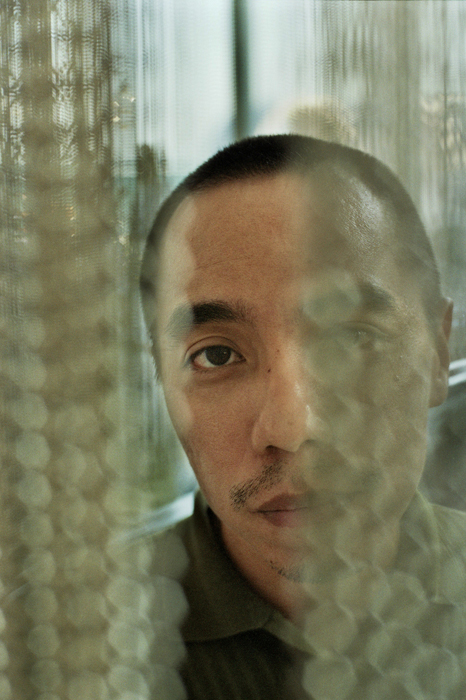
PHOTO BY KRIS DEWITTE
Apichatpong “Joe” Weerasethakul is a filmmaker and visual artist working in Chiangmai, Thailand. In May, 2010 he won the Palme d’Or at Cannes for his film, Uncle Boonmee Who Can Recall His Past Lives, which made its American premier at the New York Film Festival this past weekend. The film is inspired by the Thai story of the same name, and is part of a multi-platform gallery installation work called Primitive, which is comprised of several short films shot in the small town of Nabua, in northeastern Thailand, which is also the setting for Uncle Boonmee Who Can Recall His Past Lives. The Primitive installation has exhibited in Munich and Paris. Uncle Boonmee Who Can Recall His Past Lives follows the central character, Uncle Boonmee, through a protracted reconciliation of his mortality and the supernatural world that awaits him after his death. This supernatural world visits him while he’s alive in the form of his wife’s ghost and his son’s return home as a mythical animist spirit.
JORDAN HRUSKA: Explain the nature of the Primitive Project and how Uncle Boonmee fits into this larger work.
APICHATPONG “JOE” WEERASETHAKUL: Well, I had this urge to make a movie about this guy, Uncle Boonmee for a long time before making my film, Tropical Malady, but I didn’t know how. It’s very complex. I felt that I want to get to know the roots of the place I grew up in. It comes from many things, coupled with the censorship of my films, with repressed memories, and, how should I say, to look at something that has been forced to extinction. I want to explore this idea. So, I made this journey to the Northeast of Thailand to see what is left of this landscape and what is gone and then I went into this village that is full of repressed memories, of political past. I linked that with Uncle Boonmee, who claimed he could remember so much.
HRUSKA: What is becoming extinct exactly?
WEERASETHAKUL: It’s the idea and belief of the fable. We are trying so much to develop our country in Thailand that the landscape is changing.
HRUSKA: Does memory factor into how you render this landscape in your film, Uncle Boonmee and the Primitive installation project?
WEERASETHAKUL: For me, I see them as satellites floating around this Northeast area of the country, and film is one of those satellites and the installation is another one. They only link with the idea of memory, but they are separate. Nabua, the landscape was alien to me initially. So, that’s why I had to stay there for several months to work, to write my own diary of the place. For Uncle Boonmee, I tried to reach out to people who knew him, but I didn’t feel justified in making a biography of him. Therefore, I put a lot of my memory of my landscape in the work. Uncle Boonmee is my story in a way. The idea of landscape for me, is not only physical, but also the landscape in other media—in movies, the movies and stories I grew up with. These landscapes are disappearing, from my memory and from social collective memory as well.
HRUSKA: Jungle spaces figure largely as places for drama in your films. How do you envision these spaces? For me, they seem much more re-assuring and warm than they do threatening.
WEERASETHAKUL: It’s a place for refuge. A place to go back home or to one’s self where there’s no social roots. With regard to Tropical Malady, the idea of the sex, the concept of animal and human–the jungle provides the space and landscape for their mixtures. Because, we’re all just animals! [laughs] In Uncle Boonmee–it’s more like an artificial jungle. On the physical level, it’s was conceived much more as an adventure film aesthetic. We used the old day-for-night technique of rendering darkness in Uncle Boonmee to give it this outdated feeling. In terms of my intention, it was more about going back to the jungle and seeing it as a different place–a place that we feel alienated from, which is different than maybe when our ancestors encountered the jungle. But it is still our home. I always take my characters home.
HRUSKA: Continuing on this notion of space, how has your background as an architecture student influenced your filmmaking?
WEERASETHAKUL: For me, architects and film directors operate similarly. They are practical. As an architect, you know what you want in the conception of a space–but you still need a lot of people to help you out. You need an engineer, interior architects. But a film is the same–you have all these elements. But in terms of concept, it’s always about time. When you approach a building, you need time to go from point A to B. Buildings are designed as a journey and films are the same, you have an opening that you come through, an angle you follow, maybe a disruption in space.
HRUSKA: You refer to animalist and folkloric phenomena in your films. But there’s also an element that you bring in about the phenomena of modern, maybe western medicine and science. Sometimes these forces are at odds, other times, they strangely co-exist. Can you explain this relationship?
WEERASETHAKUL: These folklore beliefs are disappearing in a sense. But they are so much a part of me that I can’t deny them. As an example, for me, the head is a very sacred space and the feet are considered unholy. If I were to point my feet at you, this would be very rude.
HRUSKA: This is largely a Thai belief, yes?
WEERASETHAKUL: Yes, I mean, I think it’s very Asian. Somehow I know that this is nonsense, because it’s just a body part, but I cannot shake this idea. This kind of thinking is how I view the philosophy of reincarnation and the idea of the animist belief. In a way, I feel that we’re always connected, maybe you and me, we’ve been connected–not only now, but before. That’s why we’ve crossed paths. And this manifests beautifully for me in fables, old television, novels in Thailand, but now we try to ignore these themes and stories. That’s why now when we make “ghost” films, they have a certain stock quality to their effects, a certain formula, and I miss how it used to be.
HRUSKA: You mean the Thai royal period dramas that you refer to in Uncle Boonmee?
WEERASETHAKUL: Yes–these were more fantastic in a way. I think before this explosion of technology, you didn’t really have many tools. This forced filmmakers to, you know, put the actor in the monkey suit, like I did in Uncle Boonmee or double expose… to dictate that style. You can see the homemade quality of how the director viewed the supernatural.
HRUSKA: Yes, it’s not an afterthought–like something to be left to post-production. Tell me more about this idea of reincarnation. I know that at the press conference, and in other interviews, people are quick to rationalize this theme of simultaneity in Uncle Boonmee as reincarnation or even quantum physics. But, how do you conceive of it?
WEERASETHAKUL: Because I feel like film has this quality naturally, it was never my intention to have such a concrete reference to this idea of multiple universes or even quantum physics [laughs], which I have zero knowledge of. But, the idea that we can operate in different times is very important for me. And it manifests in daily life or when you meditate. In a way, it’s a very scientific thing that you experience for yourself, how time passes, how your body can react to time in different ways. I think that it’s more an unconscious presentation in this film that came through in the editing. I cannot claim that this is something that I’ve been studying. One of my friends, for example, he tells me that when it’s raining and he’s meditating, he can detect each drop of rain and he can stop it, like, you know, in the Matrix [laughs]. And I said, “Wow, this is really cinematic!” Our mind is powerful, and, you know, a movie is just a toy. To represent this idea of time in a film is very superficial, compared to what you can personally achieve.
HRUSKA: How is this view of cinema connected to the evocative scene in your short film, The Fantoms of Nabua, (which is part of the Primitive project), where a movie screen is destroyed? It seemed like a violent reaction to the filmic medium. Is this a mistrust of cinema?
WEERASETHAKUL: No, not mistrust. I want the audience to be aware of themselves and the illusion of cinema. It’s nonsense… superficial. The screen gets destroyed and you get to see the projector light behind it–just like when you’re in the movie theater, most of the time you’re unaware of the projector.
HRUSKA: How are viewers meant to see your installation, Primitive, in a gallery setting and how does this differ from the cinema?
WEERASETHAKUL: We have a gallery configuration where we basically have two spaces, one where we first allow the viewer to see several short film works on small screens in a large space, some of them show the physical construction of a spaceship in Nabua, which is central to the work. Seeing these short films first allow the viewer to create their own narrative of the spaceship’s construction. And then the second space is more like a cinema with two large screens on which the film, Primitive is showing. Somehow the viewer can fill in the gaps of Primitive with the elements of the former short films. This arrangement makes viewing Primitive totally different. I think if you view Primitive first, before viewing the other works, you’d have a different reaction entirely. You see the spaceship fictionalized in Primitive, but you saw its construction in the films just beforehand. So, you have this relationship between fact and fiction that I wanted to stress.
HRUSKA: I read that the teen actors from Nabua in the film ended up using the spaceship in the woods as a place to go drinking and to hang out. Did you foresee this happening?
WEERASETHAKUL: No, it was more like an excuse to do this together, to make fiction together and to make sense of the spaceship and its construction afterwards.
HRUSKA: Did you have a script for them?
WEERASETHAKUL: In a way, but it was comprised of our conversations together while we were making the spaceship. Afterwards I would go back and build a script based on what we talked about.
HRUSKA: How do you think your films will age?
WEERASETHAKUL: For me, they’ve already aged. When they’re finished, I don’t want to watch them. Of course, I feel protective, but I try not to attach myself to these stories.
HRUSKA: Since you’ve won Cannes, you’ve become well known in Thailand. How are your films perceived at home?
WEERASETHAKUL: For Uncle Boonmee, we opened in one theater and then went on a small tour. It was very successful–the most successful film of mine there. For me, though, I feel like an outsider sometimes. Sometimes being more public makes me feel uncomfortable. I’ll have people asking me for autographs in Thailand and I’ll ask if they’ve seen my films and they’ll say, “No, but I know who you are and I like the way you look–I like the skinhead look [laughs].” But I hope this will only last for a year or so. Then I can return to my shell.

